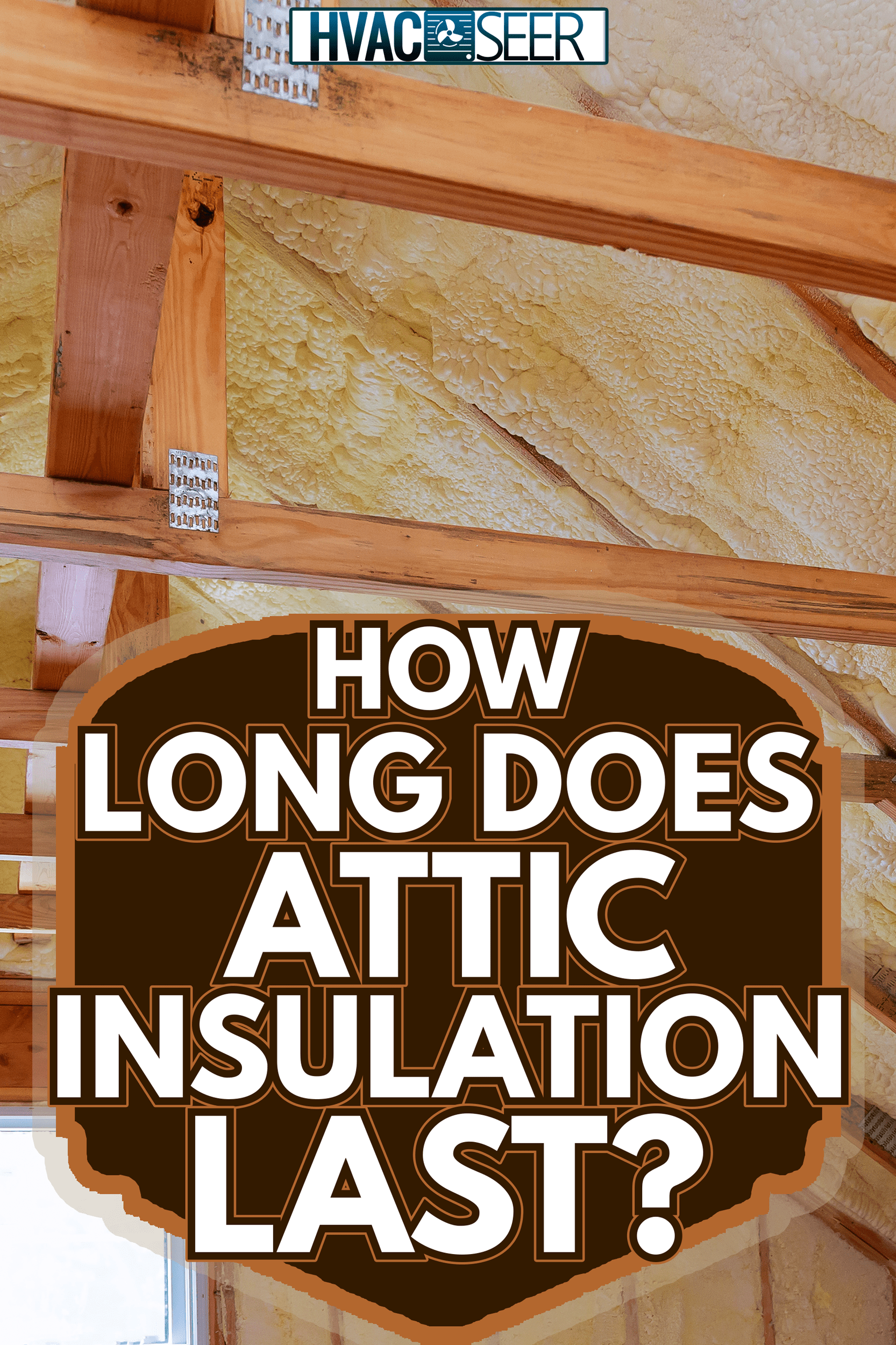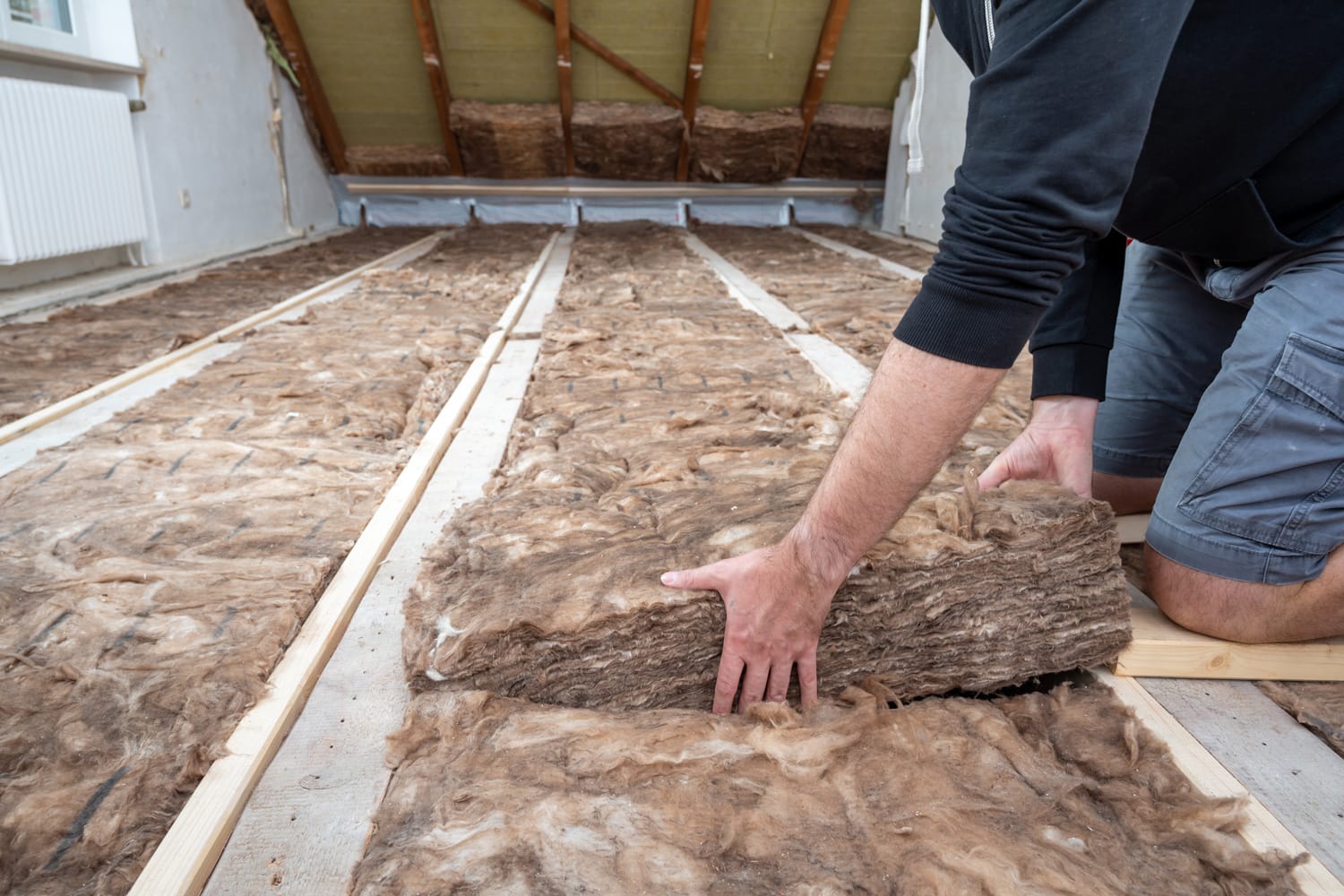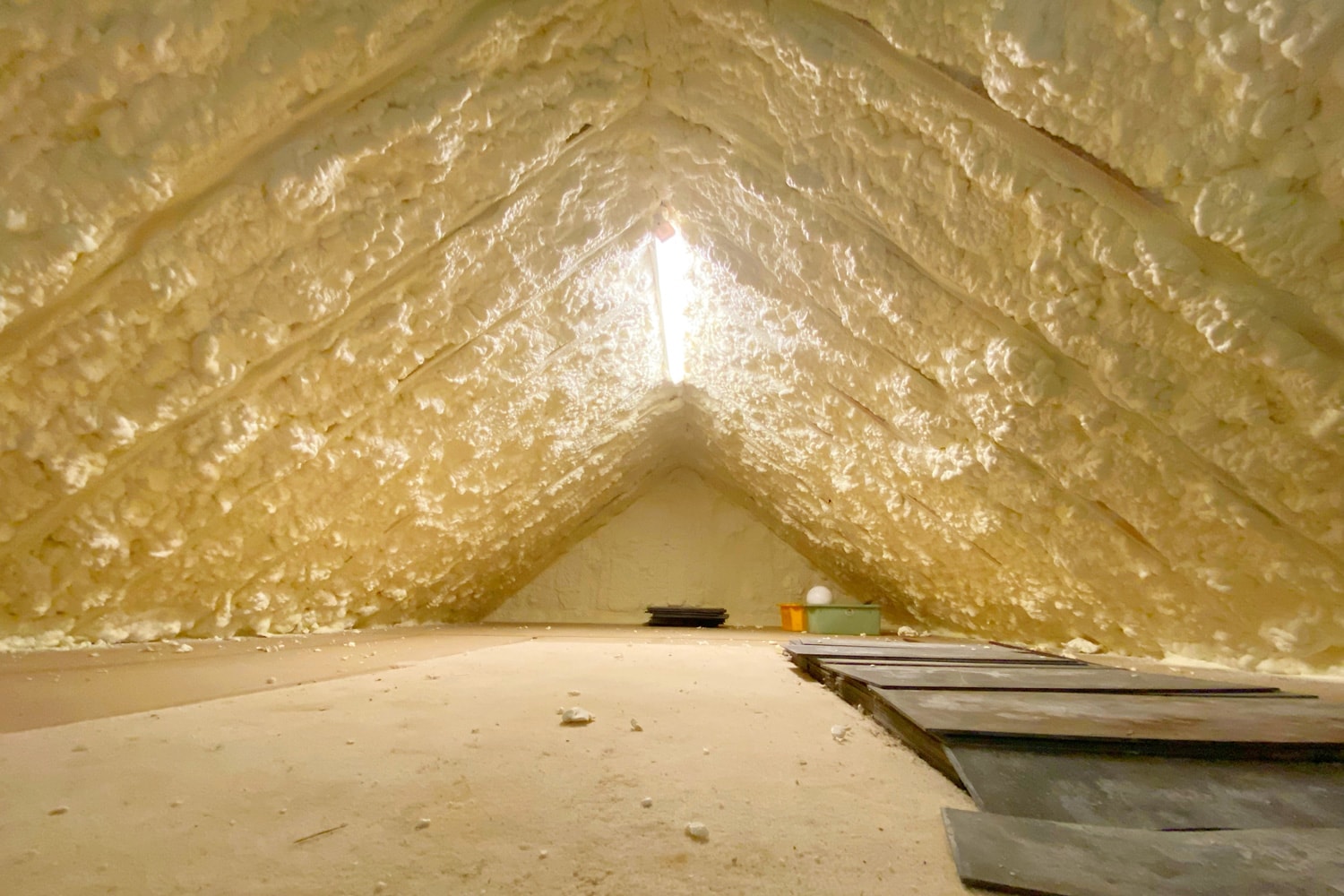When you insulate your attic or move into a new home with an insulated attic, you expect it to be durable. With that in mind, you must be wondering how many years can it last? What maintenance does your insulation need to last very long? We researched to provide answers to these questions and also tackled other related issues.
The type of insulation you install in your attic will determine how long it lasts. Different insulation methods have different lifespans shown below:
- Mineral Wool – 100 years
- Fiberglass – 80 to 100 years
- Spray Foam – 80 years
- Cellulose – 20 to 30 years
There are different types of insulation that you can install in your attic. Keep reading to learn how long each lasts and the factors that can shorten your insulation’s lifespan. Also, gain information on the signs to look out for when your insulation needs replacement.

How Long Can Your Attic Insulation Last?
https://www.pinterest.com/pin/332492384984419424/
Air normally moves from a warm area into a cold one. During winter, warm air inside your home tries to find its way outside. In contrast, during summer, warm air outside flows into your home that is cool.
The outlying rooms, which are the garage, basement, and attic, are where this flow of air from a warm to cool area happens. Then from here, the air goes into the rest of the house. It is important to insulate these areas, including the attic.
Below is a discussion on some common types of insulation used in attics and the lifespan of each:
Mineral Wool

There are two types of mineral wool suitable for insulating your home; rock wool and slag wool. Rock wool like the one below is made from volcanic rock such as basalt. It is melted up to or close to 1,600 degrees centigrade and spun into wool.
Have a look at this rock wool on Amazon.
The production of steel produces a waste product known as slag, which is mixed with natural rock and spun into wool.
With an R-value of between 3 and 3.3 per inch of thickness, mineral wool has a high thermal efficiency, is resistant to fire, and is soundproof. If installed properly, mineral wool should last a lifetime.
Fiberglass
https://www.pinterest.com/pin/444589794436147652/
This type of insulation is made from very tiny glass fibers. It is a popular choice in many homes because it is easy to install, and is less expensive compared to the other insulation materials.
With an R-value between 2.2 and 2.9, it comes in different forms, such as loose-fill fiberglass, fiberglass batts or rolls, and blown-in fiberglass.
Fiberglass insulation can last between 80 and 100 years if you install it well and address any moisture issues beforehand.
You need to install it with caution. Cut it carefully to prevent the fibers from breaking and flying around. Thus, cut it straight using a sharp utility knife. If you use another tool like the saw, the glass fibers will be all over the place. This can compromise the health of your home occupants.
The fibers can stick to your skin which can be painful. Also, inhaling these particles can be harmful to your respiratory system. That is why you should ensure you wear protective gear when installing it.
Also, fiberglass will lose its insulation capacity if it gets wet. That is why you should ensure that there are no leaks in the roof of your attic. Mold will eventually grow on the insulation, adding more health issues to the inhabitants of your home.
Spray Foam
Check out this spray foam on Amazon.
This type of insulation like the one above is a good deterrent from moisture because it seals even the tiniest cracks. It is available in two forms, closed and open-cell foam. The former has a higher R-value and is more expensive than the latter.
Spray foam prevents drafts from entering the house, and the warm air cannot find its way outside. It has a relatively high R-value from 3.6 to 3.9 per inch.
Spray foam starts to disintegrate 15 to 20 years after installation, but can last at least 80 years. Though to last that long, the conditions have to be favorable.
Cellulose
Cellulose insulation is principally made from recycled newsprint. It is light and can fit into spaces without interfering with the structure of a building.
It is great for open new walls, enclosed existing walls, and attic floors. With an R-value between 3.1 and 3.8 per inch, it lasts between 20 and 30 years.
The lifespan of your insulation can be interfered with due to bad weather or other outside factors.
Factors That Can Shorten The Lifespan Of Your Attic Insulation

Despite the type of insulation you use, various factors can compromise their durability, including:
Water Leaks
A damaged roof or missing shingle, causes water to leak into your attic, and find its way into your insulation. This lowers its insulation capacity.
Mold And Mildew
As water leaks into the attic, mold and mildew will have a good breeding ground to grow. Furthermore, incorrectly installed insulation with spaces not sealed or filled with material will harbor mold.
So, rain water will flow into these spaces, and mold will begin to grow. This occurrence could badly damage your insulation.
Punctured Insulation
Accidentally punctured insulation will start to degrade much faster if you do not repair it early.
This can happen when you are moving to another home, and a piece of furniture hits the insulation puncturing it. Or, your playful dog destroys part of it.
Whatever could have punctured your insulation, try and repair it early enough to prevent further damage.
Accumulation Of Dust
If dust accumulates on top of the insulation, or enters the spaces therein, it can stop being effective with time.
Severe Weather Or Fire
Severe storms can bring about heavy rains, which can damage your roof causing water to leak into the attic. Also, strong winds can rip off your roof exposing your attic to the elements such as snow.
These are a few examples of how bad weather can destroy your insulation.
In other circumstances, like in the unfortunate event your home experiences a fire, it will damage your insulation. You need to restore it to previous state, or it may deteriorate further.
Signs Your Insulation Needs Replacement

Some problems that occur in your home could be due to myriad reasons. If you experience one or more of the following, there could be something wrong with your insulation.
Fluctuating Temperatures
Trying many times to set your conditioning system at a certain temperature without much success, is an indication there is a problem with your insulation.
Also, if the rooms in your home have different temperatures, it could simply mean your insulation needs replacing.
Drafts In The Home
If you suddenly experience cold air passing through your room, you may need to check your attic insulation for drafts.
High Energy Bill
Worn-out or poorly installed insulation can lead to high energy bills. That is because the insulation cannot keep out the cold air from entering the home. In addition, a lot of warm air will flow out of your home.
Moisture Problems
You can prevent moisture problems by installing it correctly, otherwise it can cause moisture problems.
Condensation can take place, creating moisture in your attic. This normally happens when more than enough insulation is added.
Besides, as seen earlier in this post, a damaged roof can let in water, which subsequently damages your insulation.
How To Maintain Your Attic Insulation

You should call a professional to inspect your insulation each year. They normally check for cracks, corrosion, damage, distortion or any other type of damage.
Also, they check for condensation or buildup of ice during cold weather, and for hot spots during hot weather. This enables them to repair the insulation before it gets worse.
In Closing
If you install your insulation correctly, it can last long. If it is worn or damaged, the conditioning of your home can be interfered with, creating discomfort for the occupants.
For it to last long, you need to install it properly, have it inspected annually, and repair damages early. Sometimes, your insulation can worsen due to compromising factors such as a leaking roof, fire, severe storm, or mold.
Check if your insulation needs replacement when you start experiencing unpleasant situations such as cold drafts, high energy bills, amongst others.
You are welcome to check out more of our previous posts by clicking on the links below:


